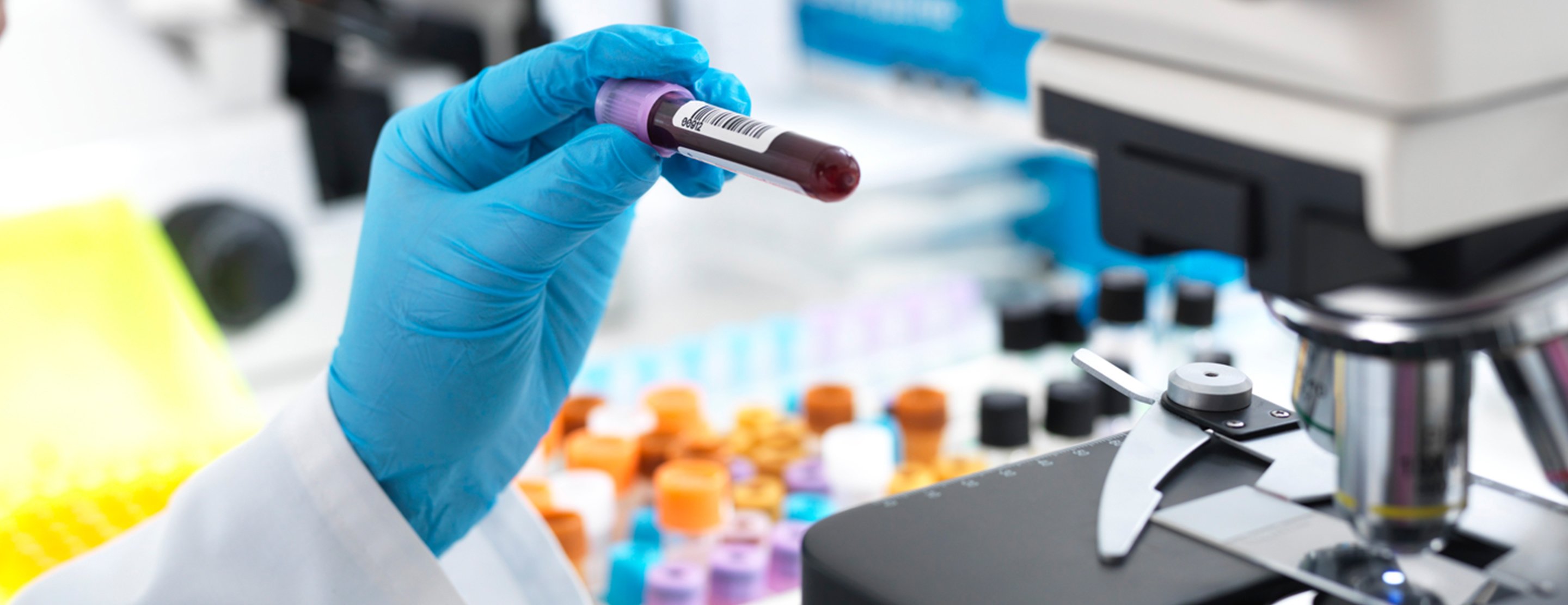
Triglyceride level
Definition
The triglyceride level is a blood test to measure the amount of triglycerides in your blood. Triglycerides are a type of fat.
Your body makes some triglycerides. Triglycerides also come from the food you eat. Extra calories are turned into triglycerides and stored in fat cells for later use.
A test for
Alternative Names
Triacylglycerol test
How the Test is Performed
A blood sample is needed. Most of the time, blood is
How to Prepare for the Test
You should not eat for 8 to 12 hours before the test.
Alcohol and some medicines can interfere with blood test results.
- Make sure your health care provider knows what medicines you take, including over-the-counter drugs and supplements.
- Your provider will tell you if you need to stop taking any medicines before you have this test.
- Do not stop or change your medicines without talking to your provider first.
How the Test will Feel
You may feel slight pain or a sting when the needle is inserted. You may also feel some throbbing at the site after the blood is drawn.
Why the Test is Performed
Triglycerides are usually measured together with other blood fats. Often it is done to help determine your risk of developing heart disease. A high triglyceride level may lead to
A very high triglyceride level may also cause inflammation of your pancreas (called pancreatitis).
Normal Results
Results may indicate:
- Normal: Less than 150 mg/dL (1.69 mmol/L)
- Borderline high: 150 to 199 mg/dL (1.69 to 2.25 mmol/L)
- High: 200 to 499 mg/dL (2.26 to 5.64 mmol/L)
- Very high: 500 mg/dL or above (5.65 mmol/L)
Normal value ranges may vary slightly among different laboratories. Talk to your provider about the meaning of your specific test results.
The examples above show the common measurements for results for these tests. Some laboratories use different measurements or may test different specimens.
What Abnormal Results Mean
High triglyceride levels may be due to:
Cirrhosis or liver damage- Diet low in
protein and high incarbohydrates Underactive thyroid Nephrotic syndrome (a kidney disorder)- Other medicines, such as female hormones
- Poorly controlled
diabetes - Disorder passed down through families in which there are high amounts of cholesterol and triglycerides in the blood
Overall, the treatment of elevated triglyceride levels focuses on increased exercise and changes in the diet. Medicines to lower triglyceride levels may be used to prevent pancreatitis for levels above 500 mg/dL.
Low triglyceride levels may be due to:
- Low fat diet
Hyperthyroidism (overactive thyroid)Malabsorption syndrome (conditions in which the small intestine does not absorb fats well)- Malnutrition
Considerations
Pregnancy can affect test results.
References
Arnett DK, Blumenthal RS, Albert MA, et al. 2019 ACC/AHA guideline on the primary prevention of cardiovascular disease: a report of the American College of Cardiology/American Heart Association Task Force on Clinical Practice Guidelines. Circulation. 2019;140(11):e596-e646. PMID: 30879355
Bredefeld CL, Lau R, Hussain MM. Lipids and dyslipoproteinemia. In: McPherson RA, Pincus MR, eds. Henry's Clinical Diagnosis and Management by Laboratory Methods. 24th ed. Philadelphia, PA: Elsevier; 2022:chap 18.
Genest J, Mora S, Libby P. Lipoprotein disorders and cardiovascular disease. In: Libby P, Bonow RO, Mann DL, Tomaselli, GF, Bhatt DL, Solomon SD, eds. Braunwald's Heart Disease: A Textbook of Cardiovascular Medicine. 12th ed. Philadelphia, PA: Elsevier; 2022:chap 27.
Grundy SM, Stone NJ, Bailey AL, et al. 2018 AHA/ACC/AACVPR/AAPA/ABC/ACPM/ADA/AGS/APhA/ASPC/NLA/PCNA Guideline on the management of blood cholesterol: executive summary: a report of the American College of Cardiology/American Heart Association Task Force on Clinical Practice Guidelines. Circulation. 2019;139(25):e1046-e1081. PMID: 30565953
Kakavand H, Aghakouchakzadeh M, Shahi A, et al. A stepwise approach to prescribing novel lipid-lowering medications. J Clin Lipidol. 2022;16(6):822-832. PMID: 36522804
Mora S, Libby P, Ridker PM. Risk markers and the primary prevention of cardiovascular disease. In: Libby P, Bonow RO, Mann DL, Tomaselli GF, Bhatt DL, Solomon SD, eds. Braunwald's Heart Disease: A Textbook of Cardiovascular Medicine. 12th ed. Philadelphia, PA: Elsevier; 2022:chap 25.
Robinson JG. Disorders of lipid metabolism. In: Goldman L, Cooney KA, eds. Goldman-Cecil Medicine. 27th ed. Philadelphia, PA: Elsevier; 2024:chap 190.
Review Date: 07/14/2024
The information provided herein should not be used during any medical emergency or for the diagnosis or treatment of any medical condition. A licensed physician should be consulted for diagnosis and treatment of any and all medical conditions. Call 911 for all medical emergencies. Links to other sites are provided for information only -- they do not constitute endorsements of those other sites. Copyright ©2019 A.D.A.M., Inc., as modified by University of California San Francisco. Any duplication or distribution of the information contained herein is strictly prohibited.
Information developed by A.D.A.M., Inc. regarding tests and test results may not directly correspond with information provided by UCSF Health. Please discuss with your doctor any questions or concerns you may have.





